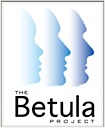
Seniors hiking through the foerst
NEAR comprises 15 local databases and one partner database, as shown below. Please visit the NEAR platform for more details about the studies and variables included.

Cognitive tests; socioeconomic, health, aging, and personality traits; medical history, self-reported health, living situations, social and family relationships, prior critical life events, lifestyle variables; biological and brain-imaging data.
To trace memory changes during adult life and old age; to identify risk factors for cognitive decline and early preclinical signs of dementia.
Detailed description on Maelstrom.
Health status, health-related behaviors and attitudes, demographics and psychosocial factors such as social support.
To study the origins of individual differences of unlike-sex twin pairs born between 1906 and 1925.
Detailed description on Maelstrom.
Social factors, lifestyle factors, medication use, functional ability, psychological and psychiatric data, somatic data, and data from proxy interviews. Blood samples, dietary examinations, ophthalmological examinations, and audiological examinations. Brain imaging and cerebrospinal fluid.
To explore interactions between genetic, biological, and psychosocial risk factors and the influence of secular changes in the development of dementia (e.g. Alzheimer Disease and vascular dementia) and other mental disorders (e.g. depression, anxiety, psychosis).
Detailed description on Maelstrom.

Blood pressure, height, weight, blood samples, cognitive status, physical functioning, family medical history, personal clinical history, retrospective cognitive assessment, clinical examination, occupational life history, caregiver burden, and use of home help and home services, comprehensive assessment of memory and other cognitive functions.
To expand the knowledge concerning aging and dementing disorders, as well as about the social consequences of dementia.
Detailed description on Maelstrom.
Health and functional ability, cognitive functioning, personality, personal control and mental health, interpersonal relationships, and functional ratings.
To examine whether the relative impact of genetic influences decreases, increases, or remains at the same magnitude for various aspects of bio-behavioral functioning in the old-old.
Detailed description on Maelstrom.

Common and complex diseases, biosampling.
To identify sub-samples for in-depth studies in which further phenotyping and genotyping were performed.
Detailed description on Maelstrom.

Information on health status, on how the participants were raised, work environment, alcohol consumption, dietary and smoking habits, social support, life events, personality, and attitudes. In-person testing: blood sampling, a health examination (blood pressure, spirometry, and grip strength), interviews, tests of functional capacity, cognitive abilities, and memory. Blood samples have provided clinical chemistry data, genotyping, methylation data, and telomere lengths.
To study the origins of individual differences in aging and the environmental and genetic factors that are involved.
Detailed description on Maelstrom.
Income security, personal wealth, education; living arrangments, partnership, family, social networks, social support; physical and mental health care, disability, morbidity, mortality. Cognitive measures. Retrospective life histories, biomarkers.
To analyse the process of population ageing considering the interplay between economic, health, and social factors in shaping older people’s living conditions.
Detailed description on Maelstrom.

Biomarkers, lifestyle, and medical history over the life course; physical status and mental health status.
To study quality of life, health complaints, cognitive impairment, oral health, and pain among older people.
Detailed description on Maelstrom.

Biomarkers, brain-imaging data, lifestyle, and medical history over the life course, physical status and mental health status.
To study quality of life, health complaints, cognitive impairment, oral health, and pain among older people.
Detailed description on Maelstrom.

Biomarkers, lifestyle, and medical history over the life course, physical status and mental health status.
To study quality of life, health complaints, cognitive impairment, oral health, and pain among older people.
Detailed description on Maelstrom

Biomarkers, lifestyle, and medical history over the life course, physical status and mental health status.
To study quality of life, health complaints, cognitive impairment, oral health, and pain among older people.
Detailed description on Maelstrom.
1. Resident Survey: characteristics, functional and cognitive status, health indicators, HRQoL and thriving.
2. Staff Survey: information on person-centredness and leadership.
3. Facility Survey: organisational variables such as staffing levels, mortality, care and activity content.
To collect nationally representative data on resident health and quality of life and the characteristics and organisation of care provision in Swedish residential aged care facilities.

Family and social relations, material living conditions (income and wealth), health, education, working conditions, political life, leisure-time activities, housing conditions, objective tests to measure physical and cognitive function.
To describe and analyze the living conditions of elderly people in Sweden.
Detailed description on Maelstrom.
Family and social relations, living conditions, health, education, socio-economy, leisure-time activities, housing conditions, cognitive function and thriving.
To study this new form of accommodations with focus on health, thriving and how residents rate their quality of life.

Biomarkers, lifestyle (with particular focus on diet), psychosocial factors, living conditions, environmental exposure (only in ENRICA-2), physical function, cognitive function, mental health status, and medical history over follow-up
To study determinants (lifestyle, psychosocial and biological) of unhealthy ageing among older people.
Detailed description on Maelstrom.